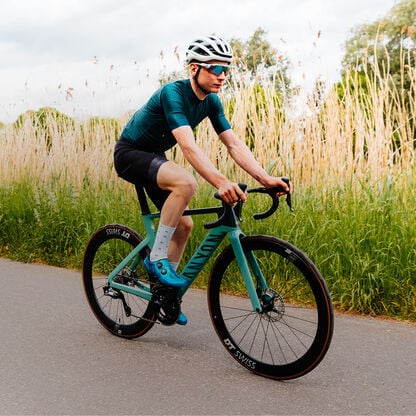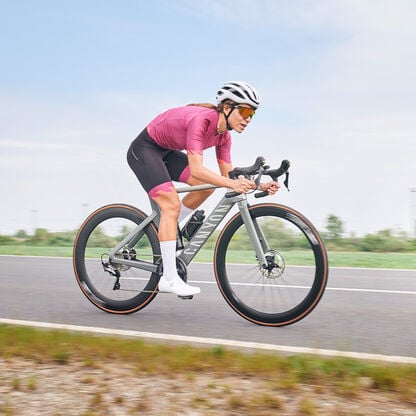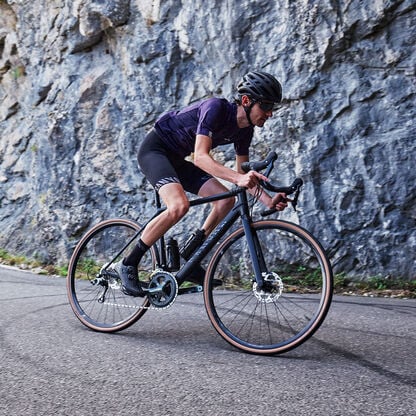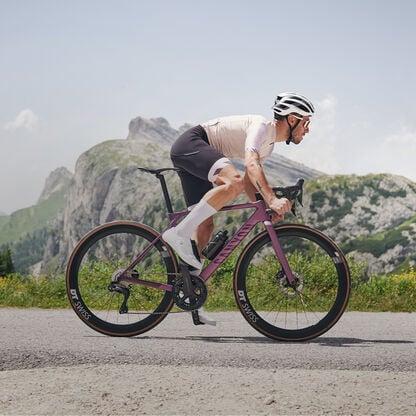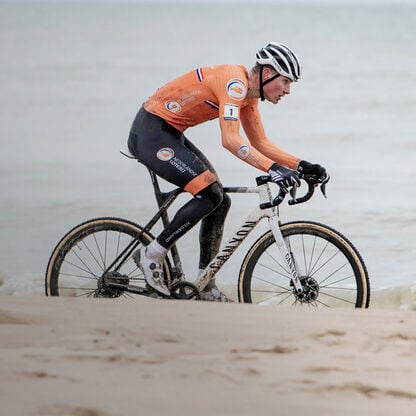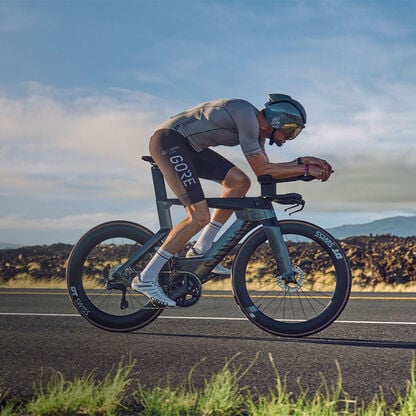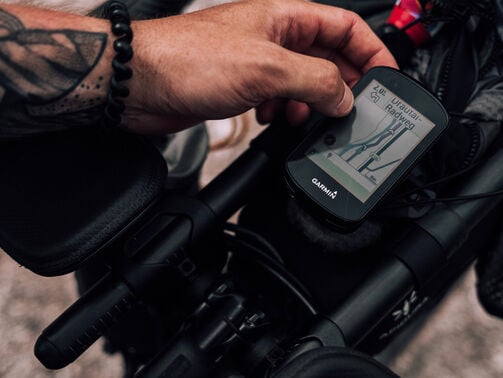Cycling with a power meter: A complete training guide
FTP, Watts, Training Plans...what’s it all about? How training with power – and the right power meter – can make you faster
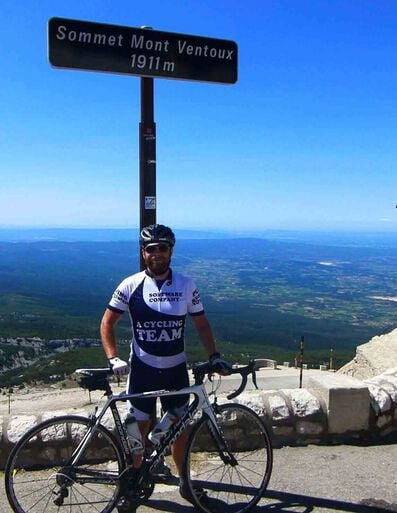
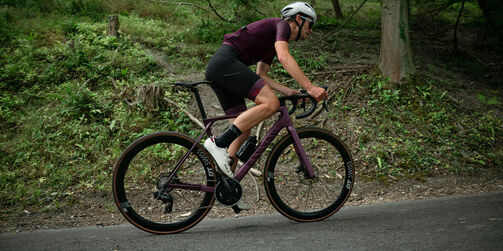
Beginning cyclists often ask what’s the best way to get faster. The answer is almost always to train with a power meter. A power meter gives you the data you need to create the right training plan for yourself, mete out your efforts while riding, and better track your progress. Not sure where to start? Read on!
Contents
What is a power meter?
A power meter uses strain gauges to measure a cyclist’s output in watts, essentially translating efforts into numbers. The higher the number, generally the harder the effort and the faster you’re riding. Once exclusively the realm of pro riders, power meters are now used by enthusiast cyclists wanting to improve (or ride Zwift).
Power meters typically attach to either the drivertrain’s spider, cranks, rear hub, or pedals. With a crank-based power meter, users can choose between a single- or double-arm unit. A double-arm meter measures the power output from both legs, while a single-arm measures only one. Double-sided power meters are more accurate, but also more expensive than a single-arm unit. No matter what type of power meter you choose, it should provide consistent, accurate data to use.
Why use a power meter in cycling?
Whether you’re a racer or just trying to be the fastest person in your weekend ride, there’s no better way to measure your improvement (or lack thereof) than the data gathered by a power meter.
“Training with a power meter is much more efficient and the training sessions can be better evaluated afterwards,” says Canyon Brand & Marketing Manager for Performance Bikes (and former champion triathlete) Markus Fachbach. “An athlete can use a power meter to precisely control the intensity of the individual sessions. For newcomers and amateurs, a power meter offers the advantage that you can control your performance at the beginning of your ride. You can control your pacing properly, so that you don’t get a bad surprise at the end!”
Understanding power metrics
In many ways, training with power is a lot like going back to school; you need to learn and know a lot of terms and numbers.
- Power, measured in watts, is the amount of energy you produce on the bike at a given time.
- Average Power is the amount of power you generate during the entirety of your ride.
- Threshold Power equals how much power you can produce over a one-hour period, typically 95 percent of your all-out 20-minute time-trial power number. (Sprinters can get even more specific, measuring power over one minute or even five seconds.)
- Normalized Power uses an algorithm to estimate your constant power output over the duration of a ride, averaging out time spent coasting or hard intervals.
- Kilojoules is equivalent to one calorie. In order to boost your all-important watt-per-kilogram ratio, you need to be burning as many calories as possible.
- Watts/Kg equals watts produced per kilogram of body weight. This is a crucial number; heavier riders typically can produce more watts that a smaller one, but the smaller rider may actually be faster because they’re not pushing a heavier mass.
- Cadence measures your pedal revolutions in a minute. One of the best ways to boost your power numbers is generating a higher cadence.
- Heart Rate is self-explanatory, measuring your body’s response to both work and rest.

How to get started with power meter training
One of the first things to do when getting started is to take a Functional Threshold Power (FTP) test to analyse your current fitness. Your FTP measures how much power you can hold, typically for an hour. You can ride at a hard, steady pace for either 20 or 60 minutes, depending on the test, then record your average wattage. For a more accurate test, use software like TrainingPeaks, Zwift or TrainerRoad, which will provide you a number at the end.
Now that you know your FTP, you can use percentages of that number to set up your training zones. The coaches at TrainerRoad created this table to follow:
| Training Zone | Power | Rate of Perceived Exertion (RPE) |
|---|---|---|
| Active Recovery | <55% FTP | 2 / Recovery |
| Endurance | 55% - 75% FTP | 6 / Easy-Moderate |
| Tempo | 76% - 87% FTP | 7 / Moderate |
| Sweet Spot | 88% - 94% FTP | 7 / Moderate |
| Threshold | 95% - 105% FTP | 8 / Moderate-Hard |
| VO2 Max | 106% - 120% FTP | 9 / Hard |
| Anaerobic Capacity | >120% FTP | 10 / All-Out |
Choosing the right power meter for your needs
So what power meter should you choose? You have plenty of aftermarket choices, such as the easy-to-install Wahoo PowrLink Zero pedals.
If you’re looking to upgrade to a new Canyon road bike, it’s likely more economical to shop for a model with a power meter included, such as the Aeroad CFR and SLX 8 Di2, or Ultimate CFR Di2 and eTap. (Here’s how to decide between the Aeroad, Ultimate, and Endurace.)
If you prefer a SRAM gruppo, the Ultimate CFR eTap comes equipped with a high-quality Quarq power meter that measures your efforts with exact precision while connected to both your bike computer and the on-board SRAM AXS system.
The Dura-Ace Di2 R9200 can be found on both the Aeroad and Ultimate CFR Di2; Shimano’s top power meter measures your power on both sides of the crank with the extreme precision the brand is renowned for. Some Aeroad CFR Di2 also offer the equally acclaimed Rotor ALDHU24 52/36 crankset and INspider power meter, featuring combined left and right measurement, and ANT+ and Bluetooth connectivity. Be sure to check the components list on the page to determine which one to order.
For a more affordable option, the Aeroad CF SLX 8 Di2 features the one-sided R8100 4iiii Precision power meter that’s also ANT+ and Bluetooth compatible, working with most popular bike-computer platforms. Read on about the differences between aero, endurance, and lightweight road bikes.
Each option gives you the data you’ll need, but it’s up to you to produce the numbers.

Creating a power-based training plan
Now that you’ve established your baseline power metrics, it’s time to start training. In order to do that, you need a plan. You have a few options to choose from, including:
- Hiring a coach.
- Buying a personalized training plan.
- Tweaking an existing training plan from the internet.
If you’re just starting out or wanting to beat your buddies in a sprint, an existing plan found on a reputable site, such as Bicycling or Velo, should be adequate. This is a great way to ease into power training inexpensively, with as little stress as possible. If you can afford it, having a personalized plan created for you is even better, giving you exact numbers to hit and strive for.
Riders who are serious about racing or wanting to jump up a level could benefit from hiring a coach that creates a personalized plan for you, monitors your training data, and offers weekly or monthly feedback on your training. You can find a coach either in your area or hire a virtual one that meets with you via Zoom (which is often less expensive).
Interpreting power data for progress tracking
After training with a power meter for a few weeks, it’s time to start analyzing numbers.
“You need to be a little bit in love with numbers,” laughs Fachbach. “It’s simply not enough to own a power meter and expect your performance to increase. While the power meter can significantly increase the quality of the training, the ultimate responsibility for the training is still the athlete and coach.”
Fachbach advises using software such as Training Peaks or Strava to analyse every individual session in detail.
Common mistakes to avoid with power meter training
When first starting out training with power, you’ll likely make some mistakes. Here are a few things to remember:
- Know the difference between the discomfort caused by a hard effort and actual pain. This can be tough at times, particularly when you’re first starting. A grizzled old racer once said that “pain is weakness leaving the body.” Pain can also be a calf strain. If you feel a burning sensation in your muscles, keep going. A stabbing or radiating pain in a specific area? Ease up and evaluate.
- Just because your power numbers are high, doesn’t mean you’ll automatically be the one with your arms raised at the finish line. On the bike and in the real world, there are thousands of other factors at play, such as race tactics, course conditions, and bad luck. Here’s some advice on improving your skills.
- This may sound counter-intuitive, but don’t get too obsessed with numbers. Put in the training hours you need to accomplish your goals, but also try to get in some rides where you’re not focused on a particular tempo or maintaining a certain wattage. Riding a bike is supposed to be fun, remember?
Cycling with a power meter is a game-changer for training, offering precise data to help you track performance and optimize your efforts. By incorporating power-based training, you can improve endurance, pacing, and overall efficiency. Whether you're aiming to enhance your race results or refine your training, a power meter is an invaluable tool for cyclists of all levels. Good luck with your training, and enjoy the ride!
For more tips and expert advice, sign up now and take your cycling to the next level!
Discover our Road Bikes
Did this article help?
Thank you for your feedback
-
 About the author
About the authorRobert Annis
Robert Annis is an award-winning outdoor-travel journalist. As an experienced writer and sport enthusiast he writes content that is inspiring with focus on road biking. You might have read Robert's articles in Bicycling, National Geographic, Outside, Travel + Leisure, Inside Hook, AARP, Midwest Living, Sierra, Hemispheres, Departures, Lonely Planet, Afar, Los Angeles Times, Chicago Tribune, RV Magazine, and Hidden Compass.
